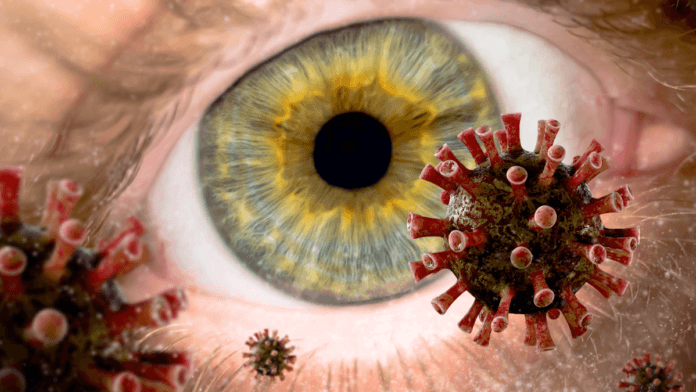Introduction
In the wake of Delhi’s worst recorded flood in four decades, the city is now grappling with an unexpected surge in eye flu cases. As the Yamuna River recedes, areas located on its banks are witnessing a rapid rise in conjunctivitis cases. Eye flu, also known as conjunctivitis or pink eye, is an infection that affects the eye’s transparent membrane called the Conjunctiva. In this article, we will explore the causes, symptoms, and preventive measures to combat this eye infection and its also spreading all over India and the cases increasing day by day.
Table of Contents
1. Understanding Eye Flu
1.1 What is Conjunctivitis?
Conjunctivitis, commonly known as pink eye, is an infection or inflammation of the Conjunctiva, the clear tissue that covers the white part of the eye. The infection can be caused by allergens, irritants, bacteria, and viruses, including the common cold virus and even the coronavirus.
1.2 Causes of Eye Flu
Eye flu can be caused by various allergens and irritants, such as smoke, dust, pollen, or chemicals. Additionally, wearing contact lenses for extended periods without proper cleaning can also lead to an eye infection.
2. Symptoms of Eye Flu
The symptoms of eye flu may vary from person to person but commonly include:
- Redness in the eye or eyelid
- Watery discharge with mild redness
- Thick yellow discharge that crusts your eyelashes
- Green or white discharge from your eye
- Burning and blurred eyes
- Increased sensitivity to light and swollen eyelids
In most cases, conjunctivitis does not affect vision significantly, but it can cause temporary blurred vision or glare when seeing lights.

3. Treatment Options / Eye Flu Ho Jaye To Kya Karna Chahie
3.1 Using Artificial Tears
One of the most useful treatments for eye flu is using artificial tears or lubricating eye drops. These can help maintain moisture in the eyes and provide relief from discomfort.
3.2 Warm or Cold Compress
Using a warm or cold compress can help reduce inflammation and swelling, offering relief to the affected person.
3.3 Avoiding Eye Rubbing:
Try to refrain from rubbing your eyes, as this can exacerbate the symptoms and potentially spread the infection to the other eye or to other people.
3.4 Seek Medical Attention:
If you suspect that you have eye flu or experience persistent symptoms, it is crucial to seek medical attention promptly. An eye specialist can provide a proper diagnosis and recommend appropriate treatment based on the underlying cause.
3.5 Follow Prescribed Medications:
If your eye flu is caused by a bacterial infection, your doctor may prescribe antibiotic eye drops or ointments. Follow the prescribed treatment regimen diligently to ensure effective recovery.
3.6 Practice Self-Care:
Getting plenty of rest, staying hydrated, and maintaining a healthy diet can support your immune system and aid in the recovery process.
Remember, prevention is always better than cure. By practicing good hygiene and taking preventive measures, you can significantly reduce the risk of contracting eye flu. If you experience symptoms or suspect an eye infection, consult a healthcare professional for proper evaluation and treatment.

4. Preventive Measures
4.1 Maintaining Good Hygiene
Maintaining good hand hygiene is crucial in preventing the spread of eye flu. Regularly washing hands with soap and warm water for at least 20 seconds and using alcohol-based hand sanitizers can be effective in reducing transmission.
4.2 Avoiding Sharing Personal Belongings
To prevent the spread of the infection, it is essential to avoid sharing personal belongings such as towels, lenses, or glasses with an infected person.
4.3 Care for Those Living Near River Banks
People living close to river banks, like the Yamuna River, need to take extra care of personal hygiene. The air in such areas may facilitate the transmission of the virus. Using clear and clean glasses and avoiding touching the eyes with unclean hands can be beneficial.
4.4 Avoid Touching Eyes with Unwashed Hands:
Avoid touching your eyes with unwashed hands, as it can introduce bacteria and viruses that may cause eye flu. Rubbing your eyes can also worsen any existing irritation or infection.
4.5 Avoid Sharing Personal Belongings:
To minimize the risk of transmission, avoid sharing personal belongings like pillows, washcloths, eye drops, contact lenses, or makeup with others, especially during an outbreak of eye flu.
4.6 Protect Your Eyes from Irritants:
If you are in an environment with potential eye irritants, such as smoke, dust, pollen, or chemicals, use protective eyewear to shield your eyes and reduce the risk of eye flu.

5. Conclusion
The recent eye flu outbreak in Delhi after heavy floods has raised concerns among the residents. Understanding the causes, symptoms, and preventive measures is crucial in combating the infection. Maintaining proper hygiene, avoiding sharing personal belongings, and taking necessary precautions in flood-affected areas can help minimize the spread of eye flu.
You can read in Hindi on India.com
6. FAQs
6.1 Is eye flu contagious?
Yes, eye flu, or conjunctivitis, is highly contagious and can spread easily from an infected person to others.
6.2 How can eye flu be transmitted? {Eye flu kaise felta hota hai?}
Eye flu can be transmitted through direct contact with contaminated surfaces by eye secretions or by touching objects or surfaces with germs and then touching the eyes without washing hands.
6.3 Can contact lenses cause eye flu?
Yes, improper use and cleaning of contact lenses can lead to eye infections, including conjunctivitis.
6.4 Are there any specific preventive measures for people living near river banks?
People living near river banks should take extra care of personal hygiene, use clear and clean glasses, and avoid touching their eyes with unclean hands to prevent eye flu transmission.
6.5 When should I seek medical attention if I suspect eye flu?
If you experience symptoms of eye flu, such as redness, swelling, and itching in the eyes, it is advisable to seek medical attention promptly to receive appropriate treatment.
6.5 Why eye flu is spreading in Delhi and Inida?
In the wake of Delhi’s worst recorded flood in four decades, the city is now grappling with an unexpected surge in eye flu cases. As the Yamuna River recedes, areas located on its banks are witnessing a rapid rise in conjunctivitis cases.





